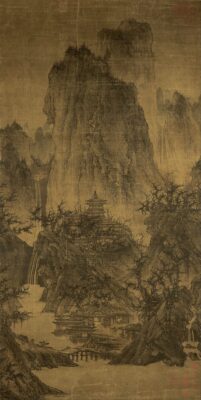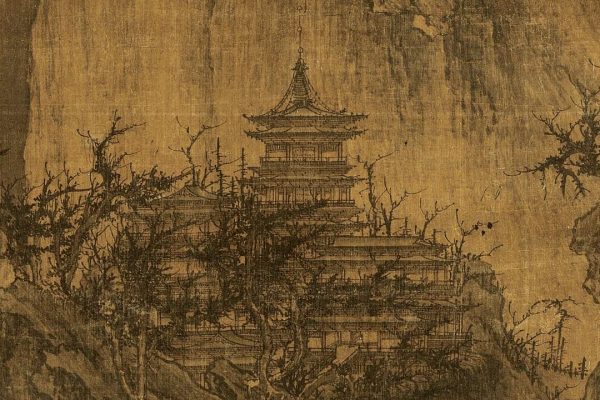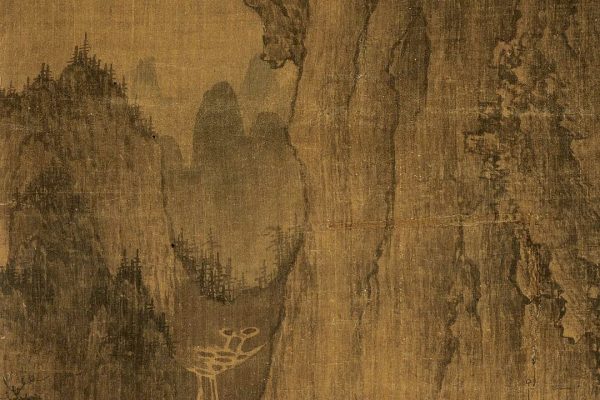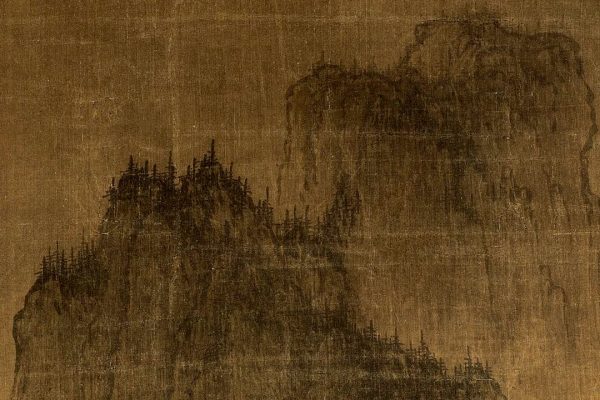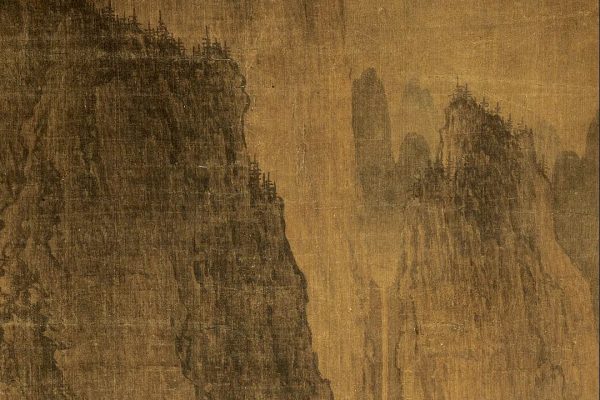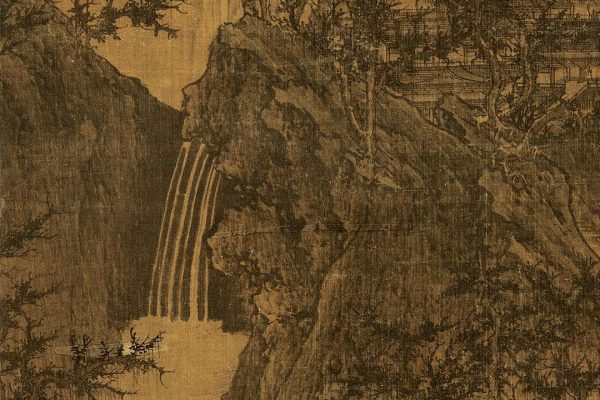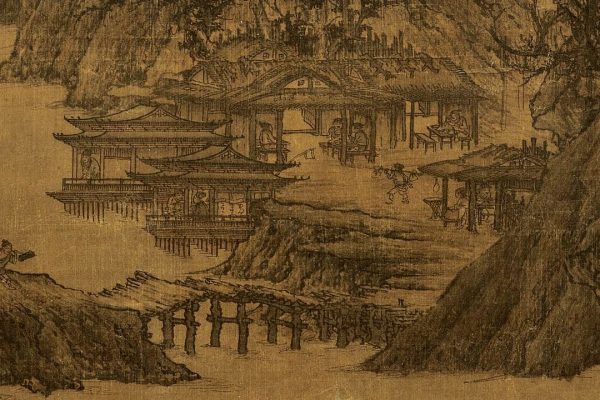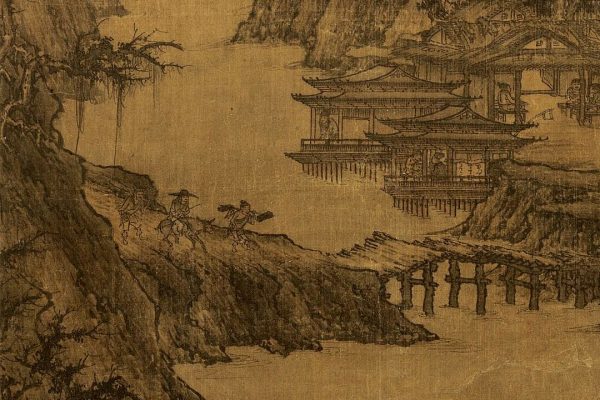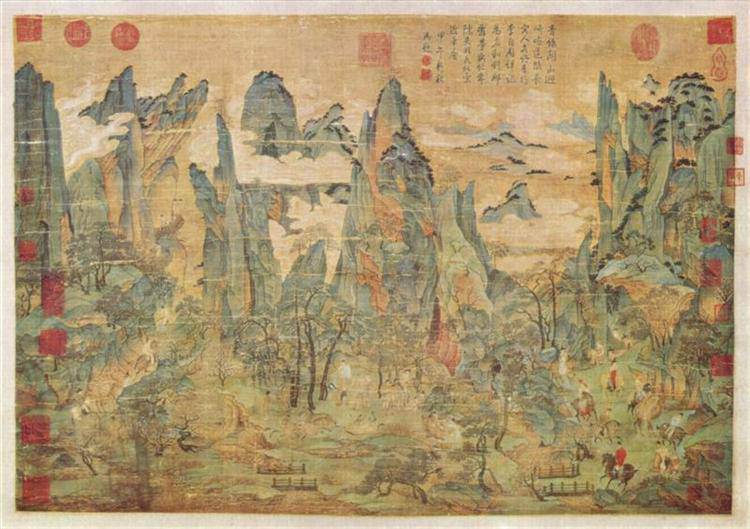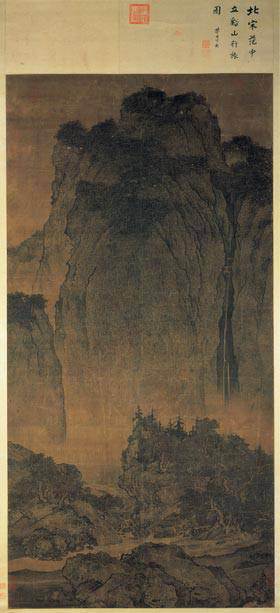Li Cheng · Solitary Temple
ca.960 a.c. Ink on silk, 111.76 x 55.88 cm. (44 x 22 inches) Nelson-Atkins Museum of Art, Kansas City
During the Song Dynasty (960-1279), the shan shui (Chinese landscape painting) achieved an exceptional development. The Taoist idea of the insignificance of man when compared to the immensity of the Cosmos inspired the painters of the time, especially during the Northern Song period (960-1127). Such is the quantity and quality of the landscapes from this period that it should be considered as one of the golden ages of landscape painting of all time, along with Impressionism or seventeenth-century Dutch landscape painting.
During this period, the new Emperors became interested in the artistic expression and many artists were invited to the courts. In addition, the popularization of the hanging rolls allowed new advances in the representation of the landscape and the natural elements, and also in the investigation of the spatial and volumetric effects.
This work by Li Cheng is a good example of all this. The Buddhist temple has been represented from a considerable distance, allowing us to appreciate the grandiloquence of the surrounding mountainous landscape. The evident verticality is emphasized by the three powerful waterfalls that surround the temple and feed the mighty river that two men are crossing by the small bridge, represented with an exceptional naturalism. The composition is a true masterpiece, and its small format does not reduce neither its force nor its effectiveness.
Text: G. Fernández, theartwolf.com
Follow us on:

